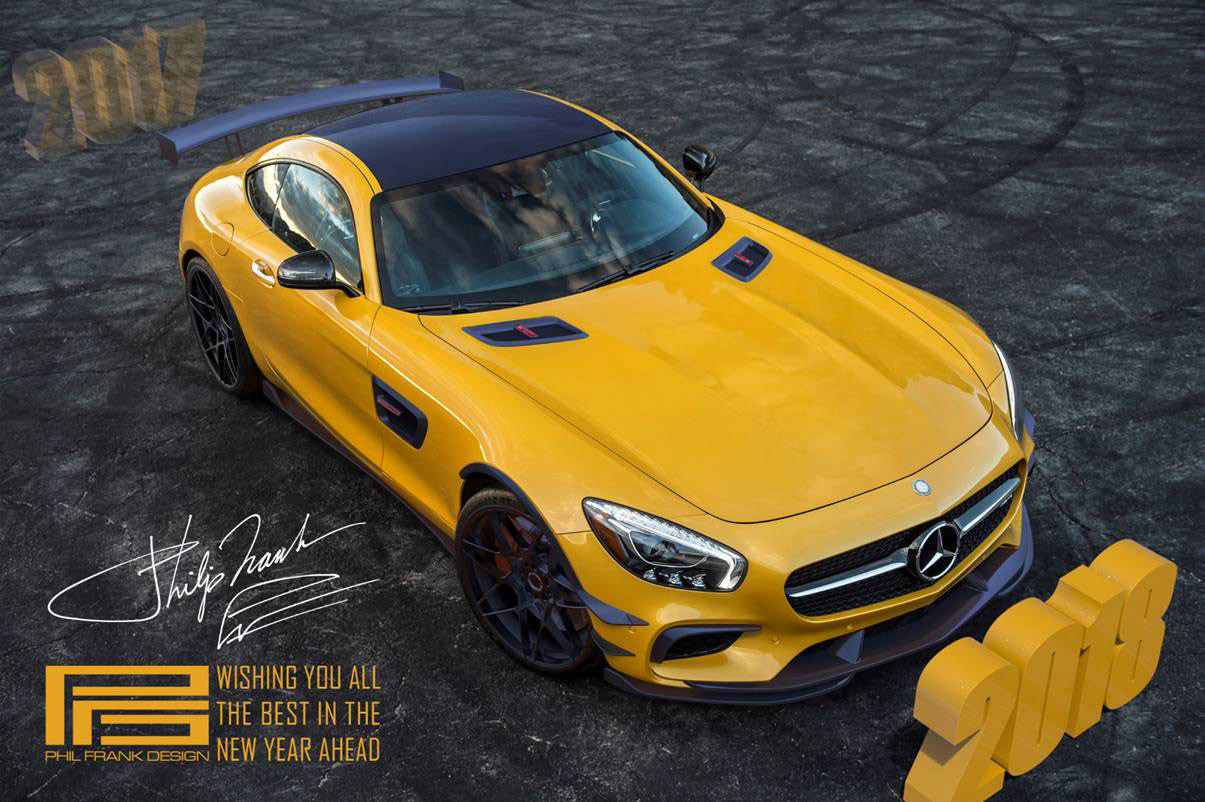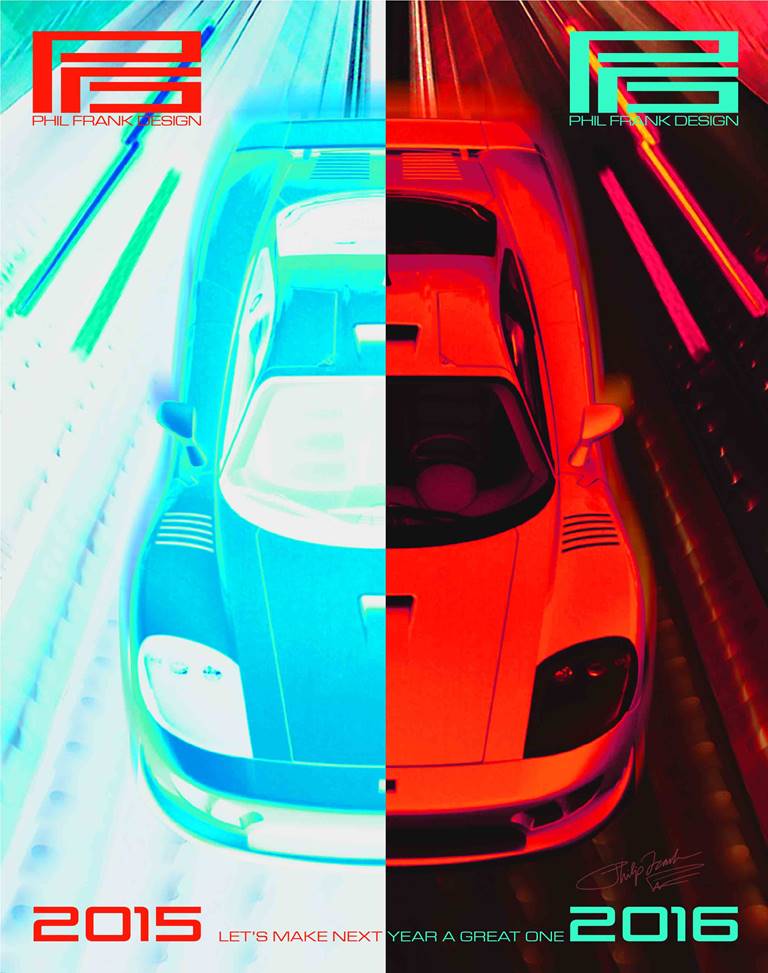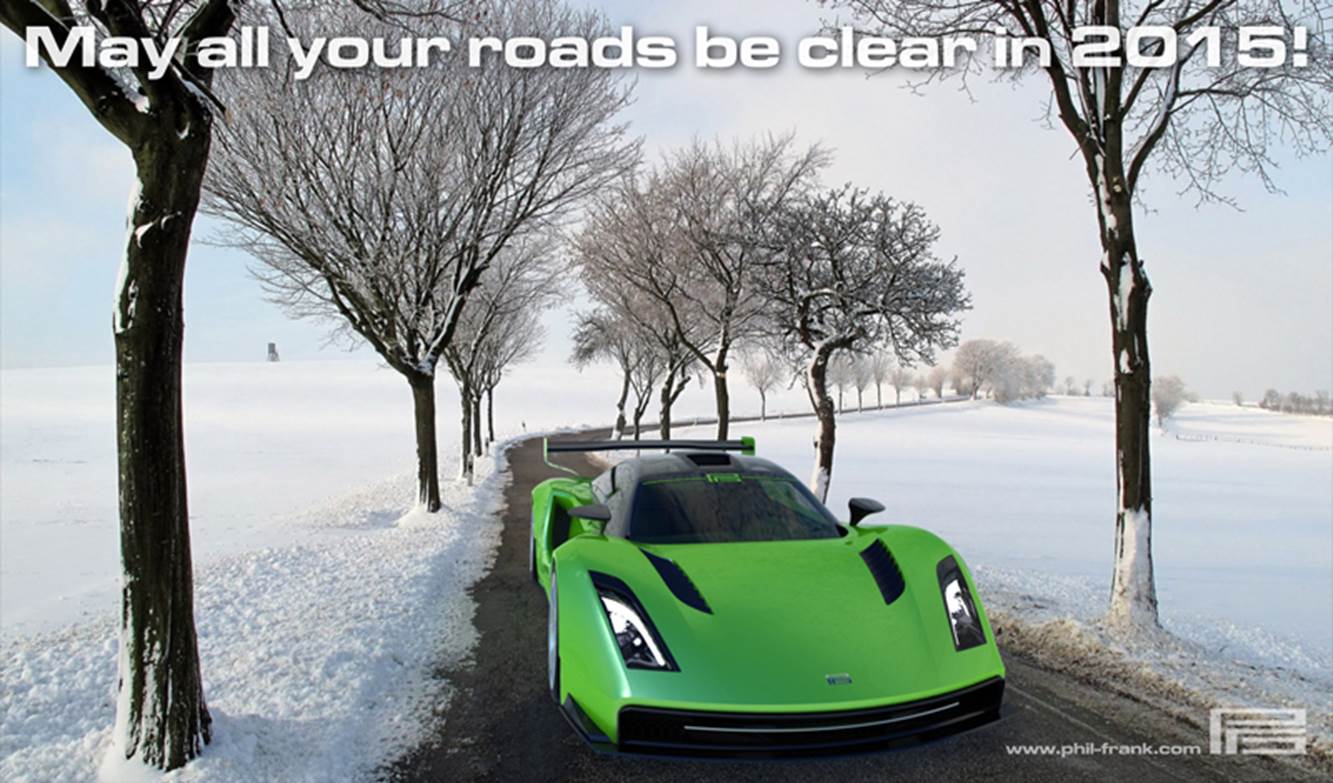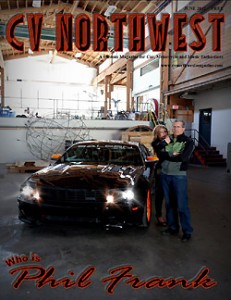From our friend Phil Frank.

Best regards,
Phil Frank, Principal
PFD – PHIL FRANK DESIGN, LLC
![]() www.phil-frank.com
www.phil-frank.com
[Source: Phil Frank Design]
From our friend Phil Frank.

Best regards,
Phil Frank, Principal
PFD – PHIL FRANK DESIGN, LLC
![]() www.phil-frank.com
www.phil-frank.com
[Source: Phil Frank Design]
From our friends at Lucky Dog Racing League.
Published on Jun 23, 2017
Hear from innovative designer Phil Frank, designer of the Nike ONE concept car and Saleen S7. The Saleen S7-R recently retired the trophy for the GT-1 class at LeMans. Phil supported the Lucky Dog Racing League “Blue Cheatahs” team with the development of their 1984 Ford Mustang 302cc (Team Captain Jimmy Schaberg) May 2017 Ridge Motorsports Park.
* www.racelucky.com
* www.phil-frank.com
[Source: Lucky Dog Racing League via YouTube]
From our friend Phil Frank.

Best regards,
Phil Frank
Principal
*pfd – *phil frank design, LLC
![]() www.phil-frank.com
www.phil-frank.com
Click here to participate in the discussion.
[Source: Phil Frank Design]

Best regards,
Phil Frank
Principal
*pfd – *phil frank design, LLC
![]() www.phil-frank.com
www.phil-frank.com
By: STAN PERRET
Original Article: CV Northwest
Issue: June, 2012

What is your design background?
My degree and profession is called Industrial Design, which basically addresses every consumer, medical or transportation product that we interact with in our daily lives, from phones, computers, watches, ovens, chairs, cars, power tools, etc. you name it and there is an Industrial Designer behind it at some point.
I see you worked at Nike, how did that prepare you for your future?
Nike was a great learning experience from a design, marketing and branding standpoint. They focus on great product with the end consumer in mind. I was in the Equipment group which was a new business and as such was somewhat independent of the big mother ship, se we were able to experiment in many different categories. I worked on sport, training and lifestyle equipment, watches, bags and eyewear, with eyewear being the most sensitive consumer product any designer can work on, as you are asking someone to wear something you design on their face, which is a bit different from a mobile phone or refrigerator.
How did you get into automobile design?
Well my dad was a car guy and an artist / cartoonist and so O inherited his automotive passion and artist capabilities. He was always restoring Ford Model A’s, MG TC’s or weird old Jaguars which were a bit too old and slow for my tastes so I leaned toward the future of what was next.
During high school I took some drafting classes but found the T-square, straight edge and #4H pencils were not the creative challenge I was after. For one birthday my dad got me a book about Raymond Lowey, the designer famous for beginning to define what an Industrial Designer should be. Lowey had also designed the Studebaker Lark and Avanti, which further peaked my interest into the field, so I began to look into getting a proper design education. I looked at Art Center down in Pasadena, California which was the main school for car design at the time, but the tuition was more than we were able to afford, so it was a State school for me. San Jose State University has an Industrial Design program, so I applied and got in.
The first two years were spent learning the design fundamentals pf perspective, sketching, problem solving, etc. Product Design at the time was pretty boring boxy stuff, so I took the Transportation Design elective with instructor Del Coats, who had worked at Ford back in the 1960’s. For the next two years I took the course over and over with a group of five or six buddies, but I’m the only Transpo guy who ended up following through on part of the car dream, though they have all done extremely well in the Product Design field.
How did you decide to get into working with Steve Saleen?
Well, what I’ve found over my years is that everything and everyone is connected to your path in life. While I was at SJSU I was granted an internship for the spring semester in the Ford Advanced Design Studio. While I was in Michigan, Ford sponsored a design program with the SJSU Transportation Design class. The project was for each student to design and hand model a one-fifth scale semi-tractor and trailer rig, which ends up being about 8’ long! To accomplish this Ford sent an actual trailer full of 8” x 16” x 8’ bricks of beautiful urethane foam, which is every starving design student’s dream when a two foot section could pay for a month’s worth of food! Along the way the class decided they would rather do more manageable one-tenth scale models, so what I got back to San Jose in June I found a huge mountain of pristine foam blocks looking to be exploited.
So, the following semester I decided I was going to do a full-size model for my senior project, which is a Shakespeare like story to fill another article someday. Anyway, the model didn’t land me a car design position as I happened to graduate during a down swing in the industry, but it did get a bit of magazine press. From that I ended up being invited to bring it to the SEMA show in Las Vegas for a design display, and this is where I met Steve on the last hour of the last day, which basically led to our collaboration over the last 20 years.
After the demise of Saleen, did you have any concerns about joining SMS Supercars?
Not as much as I should have, my wife took care of that. In 2005 I took a six month leave of absence from Nike to begin the design of the Saleen S5, that was to be based upon the GT chassis (neither Steve or I were involved in the ASC/Saleen S5 Raptor concept from 2008), unfortunately this project never started for whatever business reason, so in place of the S5 pro-gram I ended up designing and managed the construction of The Saleen Store in Irvine, California, which was a huge success for Saleen, Inc. Almost the day after its completion my leave was over so I went back to Nike, for one day, which was a bit like going back to live with your parents after ten years on your own, I made the call to Saleen that I was ready to work full time for them.
A day later I resigned from Nike and Saleen, Inc. hired me as the VP of Design. The honeymoon lasted all of six months be-fore the Great Recession rained down upon us and I got laid off with a bunch of other people. At this point the writing was on the wall for Saleen, Inc. as the VC owners/investors were pouring gasoline on the fire. After my lay-off Steve and I began our behind the scenes collaboration on creating our new company, about three months later he resigned and we moved to officially start the new endeavor as SMS Supercars.
SMS Supercars was built from my visionary direction for Saleen, Inc., that the business needed to address the resurgent American Muscle Car opportunities with ultra-high performance derivatives of the Challenger, Camaro and Mustang. This plan would help ease the up and down single model cycle that was always a challenge.
The trouble with SMS Supercars, which has now been rebranded as Saleen as Steve has supposedly gained the naming rights back, is that his business model has not evolved from the Fox Body days which is unfortunate. It was easy to throw on some springs, shocks, brakes, body work and stickers on a Fox, SN-95 or S-197 and make it handle and look much better than the stock version, but today’s reality is that the OEM’s are not leaving the performance segment to the aftermarket, you can buy a GT500 Mustang with 622 HP that does 202 MPH for under $60k with full dealer support and warrantee! How can a niche manufacturer compete with that with zero engineering, development or marketing resources? There is an old saying that I think is unfortunately fitting to the current situation with the company, “those who don’t like change are really going to hate irrelevance.” That is just my point of view.”
When you design automobiles, what is your philosophy and focus?
Well performance cars are the ultimate extensions of our extroverted personalities and as such any time I’m working on a design for one of these I focus on creating the right attitude. My “Illicit” full size show car from SJSU was inspired by the predatory attitude of a shark, this show car influenced the entire design language of all the Saleen vehicles I’ve been involved in. Basically it you are cruising in the fast lane and you see one of my cars closing on you in your rear view mirror your basic fight or flight instinct kicks in and you get the hell out of its way as “that thing is going t kill me” flashes in your mind! I guess that would answer it.
Do you prefer performance over aesthetics, or vis-versa?
I like to create what I call objects of desire, and it they happen to go fast even better. I’ve always been a spirited driver, but the performance threshold of today’s cars is so high it’s hard to take advantage of them safely or legally on the streets. To give me the dose of speed filled adrenaline I require I started a 24 Hours of LeMons and Chump Car team three years ago and I am having a blast! All I can say is EVERYONE reading this needs to do this. It is real racing on a viable budget. As Jay Lamm creator of LeMons says “Racing is not just for rich idiots anymore, it’s for all idiots.” Where else can you race with over 100 cars on some of the best tracks in the USA? That and it’s a lot less expensive to put your $500.00 race car into the tire wall at turn nine than your daily driver.
What do you use as your inner inspiration for your design work?
I look outside the category that I’m designing for, so if I’m designing a car I don’t look at other cars, for the Saleen S7 I looked to aerodynamic objects such as turbines, wind tunnels and also a bit of the predatory shark genre. The same can be said for the products I design, though these are typically problem solving exercises first and then aesthetic come into play, typically I draw from my diverse experiences to bring something new to the table and I generally try to avoid looking at the other have done with comparable products.
What are you most proud of, what do you feel is you biggest accomplishment?
That is a tough one, the Saleen S7 is definitely a major achievement for an independent designer, though I would have liked to have been able to have more time to refine both the exterior and interior, but we were just working so fast. The 1994 Saleen Mustang was great as I took the design from sketch to hand model and it was my first paying automotive consulting gig. The 2005 S281 was great as it was the first fully 3D CAD driven aftermarket design where I was able to do everything I wanted at the level of refinement that I am accustomed to, the PJ and S331 that followed from there were to the same level.
The Saleen Store was an entirely new genre for me to work in so that was an important learning experience, it was also very successful for the business as it introduced the brand to a more mainstream consumer, but at a very high level. The building of the entire SMS brand, facility, vehicles, supercharger, products, marketing, etc., was a huge accomplishment, made even more challenging with little to no budget other than my sweat equity, which unfortunately is still a point of contention.
I enjoyed all of the design opportunities at Nike, as the products I did there embody the same lifestyle passion I have for car design, just in watches, eyewear or high-end bags. I even designed the Nike ONE 2022, a purely digital concept car for the Nike/Sony Gran Turismo 4 Collaboration. Defining what a Nike car could, should and would be was a completely groundbreaking project, and in the end it will stand the test of time doe innovation and aesthetics.
So to answer your question I would have to say I’m most proud of all the opportunities I’ve been involved in, as each one has taught me something for the next one.
Click on this link to visit cvworldwidemagazine.com and download the Magazine
From our friend EyesOwnDoubtOnThis.
Uploaded on Oct 24, 2011
Phil Frank demonstrates his sketching skills to SJSU Industrial Design students.
[Source: EyesOwnDoubtOnThis via YouTube]
Renowned Designer Phil Frank introduces PFD Carbonworks
Celebrates 20 years of design work
June 10, 2011 – Portland, Oregon, Phil Frank, the man behind the design of the legendary Saleen S7, launches his exotic component business PFD Carbonworks. His twenty years of design innovation in the automotive and product domains have set the tone for the world of high performance aesthetics. From Nike watches and eyewear to shaping America’s True Supercar, from carbon fiber furniture to brand building, four generations of performance vehicles to premium retail experiences – while many people may not realize it, it is quite likely that they have coveted one of his many designs.
As a design consultant via *pfd, the 45-year-old Oregon native has been instrumental in designing the brands, vehicles and products of numerous companies. As an entrepreneur, he has focused his experience, time and resources into establishing PFD Carbonworks – dedicated to performance and innovation components for the automotive exotic enthusiast.
Each PFD Carbonworks component is digitally designed and CAD sculpted by Mr. Frank to ensure the highest quality production surface data for the optimal fit and finish befitting the exotic vehicle market. High performance materials, “Made in USA”-manufacturing, exacting standards and quality control ensure ultimate weight reduction and best-in-class fit, finish and quality which exotic car owners and enthusiasts demand.
The PFD Carbonworks development process includes digitally scanning of vehicles to ensure precision tolerances to within 0.135mm. Original designs are then digitally developed, refined and evaluated for aesthetic beauty and precision. Large format CNC machines are used to create flawless patterns with perfect symmetry from left to right, something rarely accomplished in the exotic vehicle component world. After that, precision autoclave molds are created for production of each bespoke carbon fiber component.
Each Limited Edition PFD Carbonworks component goes through a rigorous quality control cycle and is eventually signed off personally by Mr. Frank to ensure his name befits the end product. From here, the component is authenticated, dated and serialized prior to delivery.
The first PFD Carbonworks component available is a carbon fiber front bonnet for the first generation Lamborghini Gallardo, designed to complement the crisp lines and dramatic body of the original, while retaining an appropriate amount of the evolving Lamborghini Design DNA from vehicles such as the Reventón, Sesto Elemento and Aventador. The subtle vanishing center facet and the minimally exposed carbon fiber weave of the diving blade surfaces make a dramatic and modern visual statement. The results are stunning yet refined and elevate first generation Gallardos into a league befitting current and future Lamborghini offerings.
The second PFD Carbonworks offering is a carbon fiber aerodynamic trim package for the Audi R8 which includes front splitters, side splitters and a Gurney lip spoiler – each component designed to complement the sinuous lines and crisp details of the R8 while achieving aerodynamic performance gains.
The material richness and beauty of these carbon fiber components is enhanced by their incredible strength and minimal weight. Production begins in July, while complete packages or individual components can be ordered now. Similar design solutions for the Mercedes-Benz SLS AMG, the Ferrari 458 and the Aston Martin Vantage are in development.
The third PFD Carbonworks product line was envisioned as a convergence of automotive design, material richness and sculpture for enthusiast’s environments – the dramatic and visually minimal PFD Carbon Fiber Spyder Tables are a compliment to any exotic car owner’s lifestyle garage, entrepreneur’s office, bespoke living room or luxury yacht.
Each PFD Spyder Table is constructed to the same exacting standards as the automotive components, including the carbon fiber chassis, billet aluminum hub and the 12mm beveled, etched and tempered glass. The built to order Serialized Limited Edition PFD Spyder 2323 End and PFD Spyder 5325 Coffee tables are available for purchase now.
PFD Carbonworks founder Phil Frank concludes “For twenty years I’ve been designing behind the scenes for other brands via *pfd and I will continue to do so. However, by establishing PFD Carbonworks, I’ve chosen to design what I love for myself and the exotic car enthusiast community”
From our good friend and longtime Saleen and SMS Supercars designer Phil Frank…
I’ve decided to make some of my original automotive art available as art gallery canvas prints. If there is a piece you like, get in touch and we will arrange to have it printed, stretched and mounted and delivered in sizes up to the original. These make a great addition to any automotive enthusiast’s garage, office or home. I will be adding earlier generation work as time permits so please check back or let me know what you would like to see.
By: MATT CAMPBELL on July 10, 2010
Original Article: AGE, THE (MELBOURNE)
High hopes. That pretty much sums up the American-designed Dagger GT concept car.
According to the car’s creators, TranStar, the Dagger GT aims to break all the rules on the way to becoming the fastest supercar in the world.
The company claims it will not quit until it achieves the following goals: a quarter-mile time of less than 6.7 seconds; record lap-times at the Nurburgring in Germany and Virginia International Raceway; a sub 1.5-second 0-100km/h time; and a top speed of more than 480km/h. Jeepers!
How does the Dagger GT aim to do all this? With a twin-turbo multi-fuel 9.4-litre V8 engine producing 1500kW of power and close to 2800Nm of torque, of course. All that gusto is sent to the rear wheels via a reinforced six-speed manual gearbox.
There will be a couple of different models of the Dagger available including a more comfort-focused version and a luxurious model called the GT-X. Each car will be hand-built and customized to the owner’s preferences — including colour, wheels and interior trim.
The car’s lead designer, Phil Frank, is well known in the ultra-fast car community — he also penned the LeMans-winning Saleen S7 supercar.
“It’s time to smile and have fun again,” the company exclaims. “This supercar is being specially designed to break all world records and to bring back the most popular class of race car: the unlimited class which has been regulated, restricted and compromised into extinction.”
TranStar says it plans to have five Daggers on the road next year, and three of them are already accounted for. The company plans to build 10 more cars in 2012, provided the first five examples are snapped up in time.
Possibly the maddest thing about the Dagger GT is that TranStar plans to offer this world-beating behemoth for just $US450,000 ($530,000). So it will be quicker than the recently crowned world’s fastest car – the Bugatti Veyron 16.4 Super Sport – with a price-tag of about $3m less.
Phil Frank Design wins 2010 24 Hours of Le Mans
Le Mans, France. The #50 Saleen S7R campaigned by Larbre Competition wins the last GT1 classification race to be held at the 78th running of 24 hours of Le Mans and takes its place in history.
Designer of the Saleen S7, Phil Frank celebrates the crowning achievement, “This is very proud moment for me, ten years ago I had just completed my design work on the S7, few people know the interesting story so I’ll share some of it here. I had been providing design consulting for Saleen for about seven years at the time, including two generations of Saleen Mustangs, a Saleen Explorer, a Saleen Focus and the Saleen SR Mustang race car. The later was the precursor to the S7, as it took more time to convert a Mustang into a true competition car than to start from a clean sheet of paper. And thus my design and development work began.”
Phil explains, “December 19, 1999, Portland, Oregon, the design work for the S7 officially began in my humble basement studio of my home. At the time I was employed by Nike Equipment as a watch designer, so my S7 design work took place during my second shift, from 9 PM to 1, 2 or even 3 AM, I knew it was time to sleep when the RML engineers in England responded instantly to my emails!
Phil continues, “For the next four months I pioneered and completed the first complete digital development of the body and interior of a production car, if you can believe it using Rhinoceros3D 1.0! We went from 3D data to production surfaces with just one 1:5 scale CNC model in between.”
August 19, 2000 the S7 debuted at Pebble Beach as the world’s fastest road car of its time, just eight short months after the initial sketches were put to paper, another amazing achievement. The S7R race version was introduced shortly afterwards in 2001, where it went on to win all four of the Championships in which it competed that year including: the driver’s championship of the American and European LeMans Series’, the American Grand Am Series and the FIA GT Championship.
“My congratulations to Jack Leconte and his Larbre Competition drivers Roland Bervillé, Julien Canal and Gabriele Gardel to this extraordinary achievement, you made me proud!” Phil Frank.
For more information on Phil Frank, please visit http://www.phil-frank.com